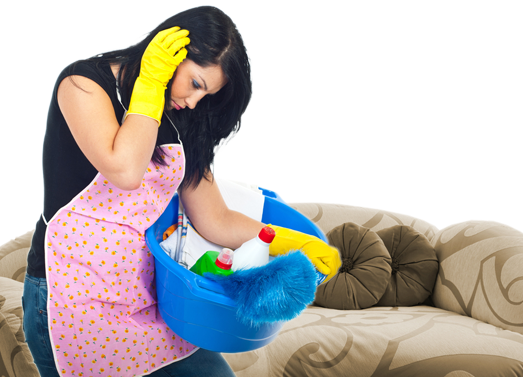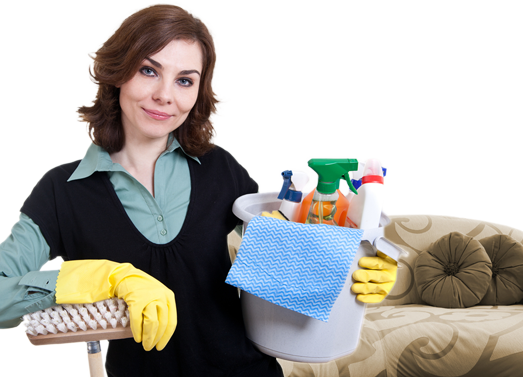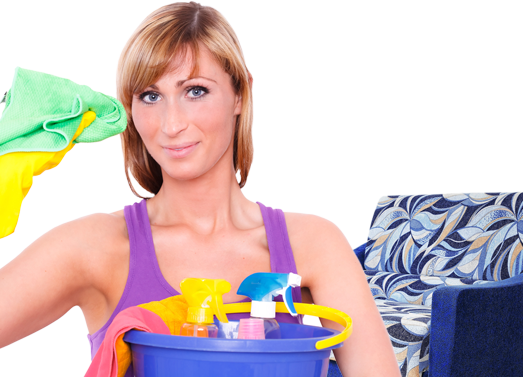Achieve Spotless Surfaces with Home Carpet and Hard Flooring Cleaning
Posted on 15/06/2025
Achieve Spotless Surfaces with Home Carpet and Hard Flooring Cleaning
Everyone admires a sparkling, spotless home, but achieving those pristine surfaces requires more than an occasional sweep or vacuum. Both carpets and hard floors face daily challenges: dirt, dust, spills, and regular wear and tear. This comprehensive guide dives into the best strategies, tools, and techniques for effective home carpet and hard flooring cleaning, ensuring your living space stays fresh, hygienic, and welcoming.

Why Cleanliness of Carpets and Hard Floors Matters
Maintaining spotless carpets and hard flooring isn't just about aesthetics. Clean surfaces play a vital role in our health and well-being. Dust mites, bacteria, pet dander, and allergens accumulate in carpets and on hard floors, triggering allergies and reducing indoor air quality. Regular cleaning extends the lifespan of your floors and ensures your home remains a safe, comfortable haven for your family.
Key Benefits of Pristine Surfaces
- Enhanced indoor air quality
- Prevention of allergies and respiratory issues
- Odor control
- Preservation of property value
- Improved appearance and comfort
- Cost savings through increased longevity of flooring materials
Understanding Carpet and Hard Floor Types
Before beginning any carpet or hard floor cleaning regimen, it's essential to identify the material underfoot. Carpets vary in fibers (e.g., nylon, polyester, wool) and pile (loop or cut). Hard floors include options like hardwood, laminate, tile, vinyl, and stone. Each surface demands unique cleaning solutions and approaches. Here's how to tackle each effectively:
Carpet Types and Their Cleaning Needs
- Nylon: Durable, stain-resistant, but may accumulate static and soil easily.
- Polyester: Hydrophobic and stain-resistant, but may flatten with heavy traffic.
- Wool: Luxurious and natural, but sensitive to harsh chemicals and agitation.
- Olefin (Polypropylene): Moisture-resistant yet prone to staining by oils.
Understanding your carpet's material allows for settling on the right home carpet cleaning techniques: some carpets tolerate steam cleaning, others require dry methods.
Common Hard Flooring Types
- Hardwood: Natural, beautiful, and requires gentle, moisture-controlled cleaning.
- Laminate: Susceptible to water damage, benefits from damp (not wet) mopping.
- Tile (Ceramic/Porcelain): Water-resistant, easy to clean, but grout may attract dirt.
- Natural Stone: Porous, needs special stone-safe cleaning solutions.
- Vinyl: Resilient, water-resistant; easy to mop and maintain.
Essential Tools for Spotless Surfaces
To maximize the effectiveness of your carpet and hard floor cleaning efforts, assembling the right set of tools is non-negotiable. Below are must-have items for any homeowner striving for pristine floors:
- Vacuum Cleaners: With appropriate attachments for carpets and bare floors
- Broom and Dustpan: For daily debris removal on hard floors
- Microfiber Mops: Ideal for hardwood, tile, and laminate care
- Carpet Sweepers: Quiet alternatives to vacuums, excellent for quick touch-ups
- Steam Cleaners: Deep-clean carpet fibers and hard floors (make sure the surface is compatible)
- pH-balanced Floor Cleaners: Formulated for the specific type of flooring
- Carpet Shampooers: Help remove embedded dirt and stubborn stains
- Scrub Brushes: For tile grout or tough carpet spots
Pro-Tip:
Always consult manufacturer recommendations before using any cleaning product or equipment to maintain your warranty and avoid damage.
Step-by-Step: Home Carpet Cleaning Techniques
1. Regular Vacuuming for Carpets
Frequent vacuuming is the cornerstone of spotless carpets. Aim for at least once a week, and even more often in high-traffic areas. Use overlapping passes to pick up:
- Dust
- Dirt
- Pet hair
- Allergens
2. Spot Cleaning Stains Immediately
Stains are easiest to remove while still fresh. Blot the stain (never rub), apply a carpet-safe cleaner or a homemade mixture (one-part white vinegar to two-parts water), and press with a clean cloth. For tough stains like wine or coffee, repeat the process, and consider commercial spot removers if needed.
3. Deep Cleaning and Shampooing
Every 6-12 months, carpets require deep cleaning to remove ground-in dirt:
- Rent or buy a carpet shampooer
- Move furniture and vacuum thoroughly
- Add carpet shampoo according to the machine's instructions
- Slowly go over the carpet, allowing the machine to extract water
- Allow ample drying time (use fans for better airflow)
4. Deodorizing and Sanitizing
For a fresh-smelling home, sprinkle baking soda over your carpet, let it sit for 15-30 minutes, then vacuum. For extra hygiene, choose products that neutralize odors and kill bacteria, especially if you have pets or small children.
Effective Hard Floor Cleaning Methods
1. Sweeping and Dust Mopping
Prevent grime buildup by sweeping or using a microfiber dust mop daily. This removes surface dirt that, when left unattended, can scratch or dull hard floor finishes.
2. Mopping with the Right Solution
Wet mopping techniques vary based on floor material:
- Hardwood: Use a slightly damp mop & wood-safe cleaner; avoid excess water.
- Laminates: Stick to damp mopping; water can cause swelling and warping.
- Tile: Mops with a tile-safe detergent work well; don't forget to clean grout lines.
- Natural Stone: Use pH-neutral cleaners specifically for stone--acidic products can cause etching.
- Vinyl: Standard floor cleaners and a microfiber mop suffice.
3. Stain and Scuff Removal
Deal with spills and stains immediately to prevent permanent marks, especially on wood and stone. For scuffs:
- Try a melamine sponge or diluted vinegar on vinyl or tile
- For laminate, use a manufacturer-approved polish
- Wood: Gently rub with a soft cloth and a small dab of floor-specific cleaner
4. Protecting the Finish
Hard flooring benefits from routine maintenance, such as:
- Reapplying sealants to stone and tile as recommended
- Polishing hardwood to restore shine
- Placing felt pads under furniture legs
- Using rugs or runners in high-traffic areas
DIY Cleaning Solutions for Home Use
While store-bought cleaners are convenient, many homemade cleaning solutions are just as effective and safer for your family and environment. Here are some tried-and-true recipes:
- All-Purpose Carpet Cleaner: Mix 2 cups of warm water, 1 tablespoon of dish soap, and 1 tablespoon of white vinegar.
- Hardwood Floor Cleaner: Combine 1/2 cup of white vinegar with 1 gallon of warm water. Always test in a small spot first.
- Tile and Grout Cleaner: Mix equal parts baking soda and water for a paste. Scrub grout lines with a brush, then rinse thoroughly.
- Stone Floor Cleaner: Mix a small amount of castile soap in warm water; avoid vinegar or lemon which can damage stone.
Pro-Tip: Always spot-test homemade solutions on a hidden area before widespread use to prevent accidental discoloration or damage.
Professional Carpet and Hard Floor Cleaning Services
Sometimes, your floors need attention beyond what DIY methods can achieve. Professional cleaning services use advanced equipment, specialized cleaning agents, and trained technicians to restore even the most challenging carpets and hard floors to like-new condition.
- Deep extraction for carpets removes embedded dirt and allergens
- Steam cleaning and hot water extraction sanitize and deodorize
- Encapsulation cleaning for commercial-grade carpets
- Power scrubbing, sealing, and polishing for tiles and stone
Engaging experts at least once a year can prolong your flooring's lifespan and ensure a deeply clean, healthy living environment.
Tips for Preventing Future Dirt and Damage
- Use doormats inside and outside entrances to trap dirt.
- Remove shoes before walking on carpets and hard floors.
- Immediately clean spills and stains to avoid permanent marking.
- Rotate area rugs to equalize wear and sun exposure.
- Maintain pet grooming to minimize shedding.
- Implement a regular cleaning and maintenance schedule.
Green Cleaning: Eco-Friendly Solutions for Your Home
Many commercial products contain harsh chemicals that can affect indoor air quality and the planet. Opting for eco-friendly carpet and hard floor cleaners protects both your family and the environment. Look for:
- Plant-based or biodegradable formulas
- Fragrance-free or naturally scented (with essential oils)
- Non-toxic and pH-balanced
- Certified by eco-labels (Green Seal, EPA Safer Choice, etc.)
Making smart, sustainable choices ensures cleaner surfaces and a greener footprint.

FAQs: Achieving Spotless Surfaces in Every Home
-
How often should I deep-clean my carpets and hard floors?
Deep cleaning every 6-12 months is ideal, though high-traffic or homes with pets/children may require more frequent attention. -
Can I use the same cleaner on all hard floor types?
No, always choose a product specific to your floor type to avoid damage--especially with natural stone and hardwood. -
What's the best method for removing pet stains?
Blot with a solution of water, white vinegar, and mild detergent, then rinse and blot dry. Commercial enzyme cleaners can also help. -
Is professional cleaning necessary?
For long-lasting, spotless results on stubborn stains or large areas, professional carpet and hard floor cleanings are worth the investment.
Conclusion: Enjoy Impeccable Floors Year-Round
Achieving and maintaining spotless surfaces with home carpet and hard flooring cleaning is well within anyone's reach. By selecting appropriate cleaning methods, sticking to a regular maintenance schedule, and using smart preventive techniques, your home will always have clean, healthy, and beautiful floors. Whether you rely on everyday household ingredients, advanced cleaning tools, or professional services, your commitment to floor care guarantees lasting comfort and value in your living space.
Ready to elevate your home's cleanliness? Start implementing these proven tips today and revel in the transformative power of cleaner carpets and hard floors!





